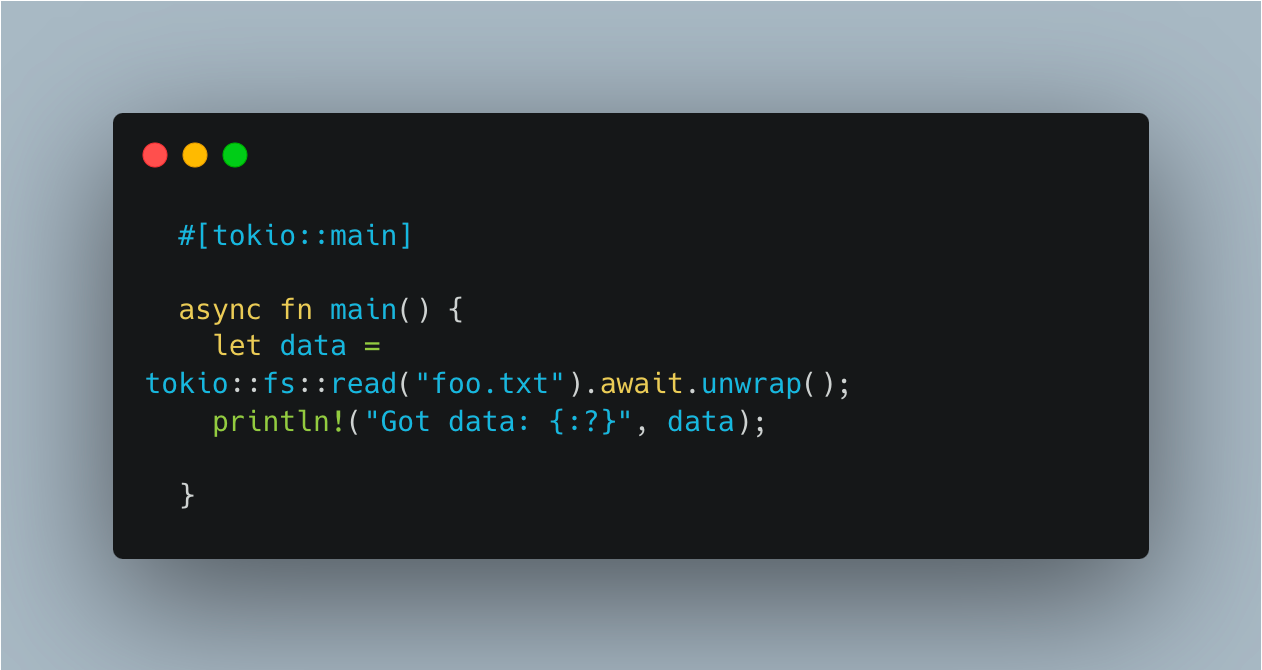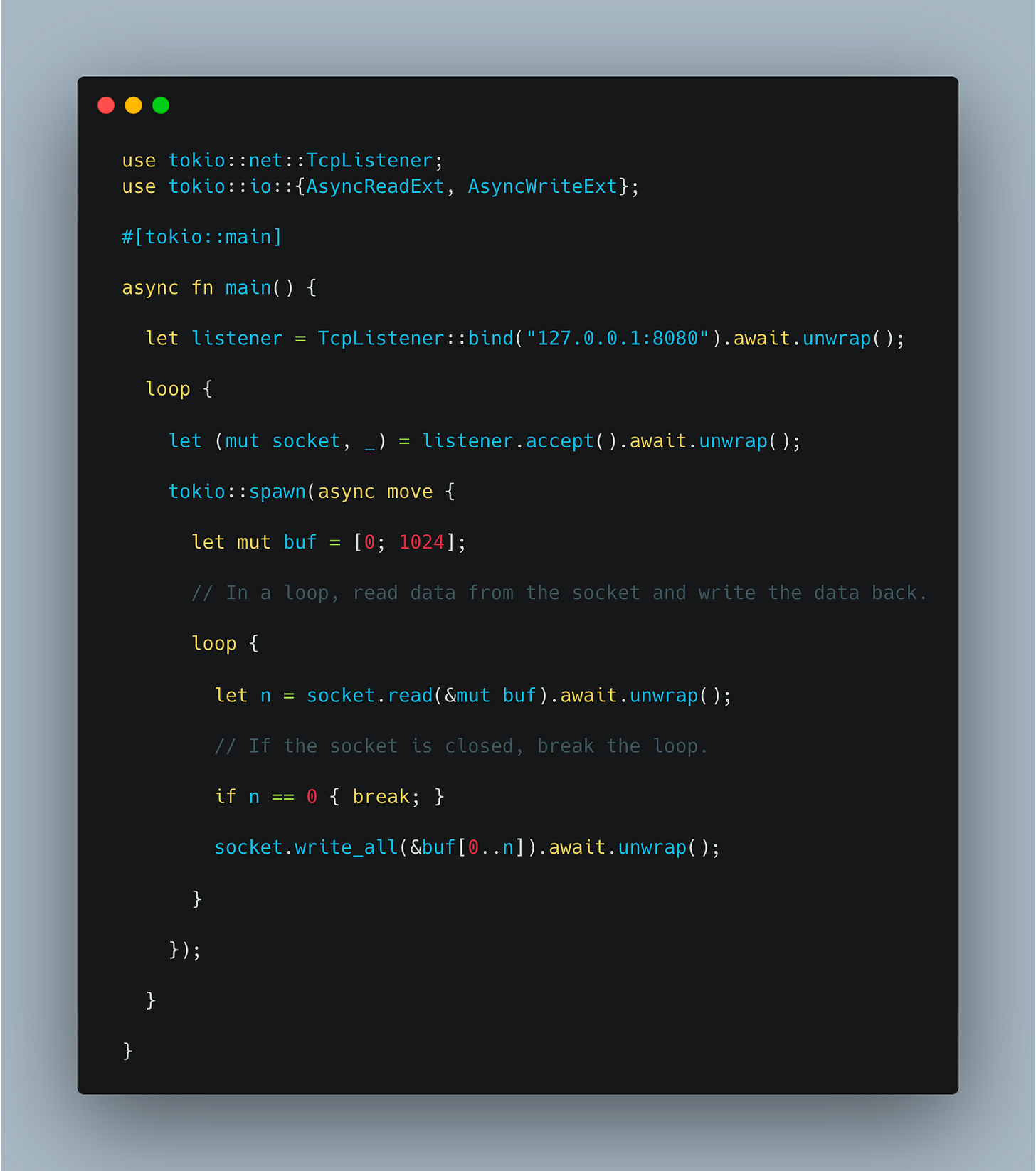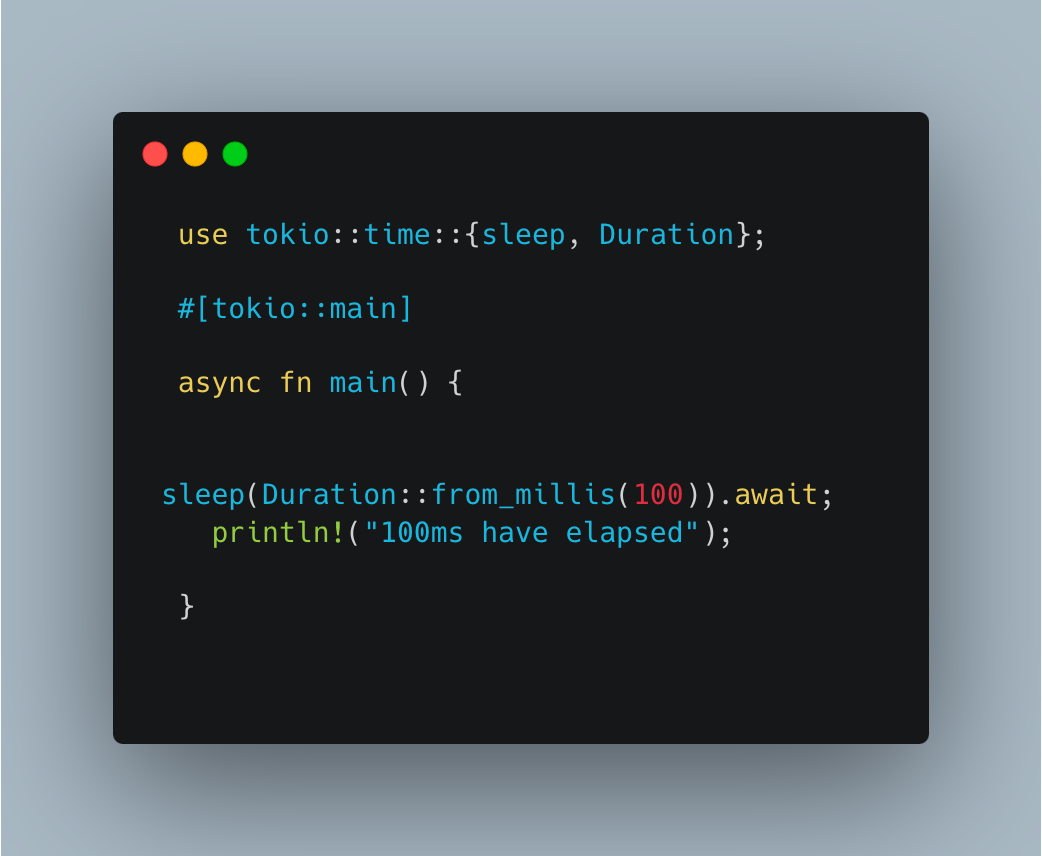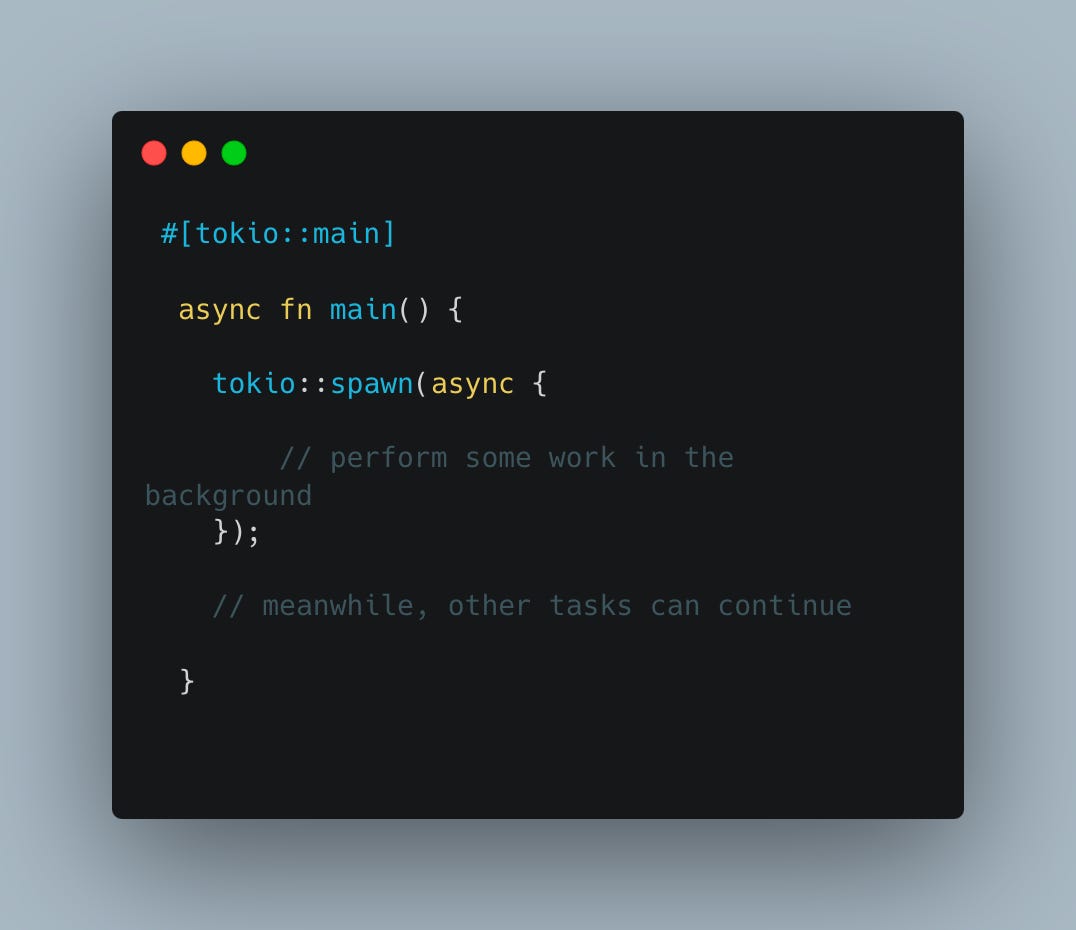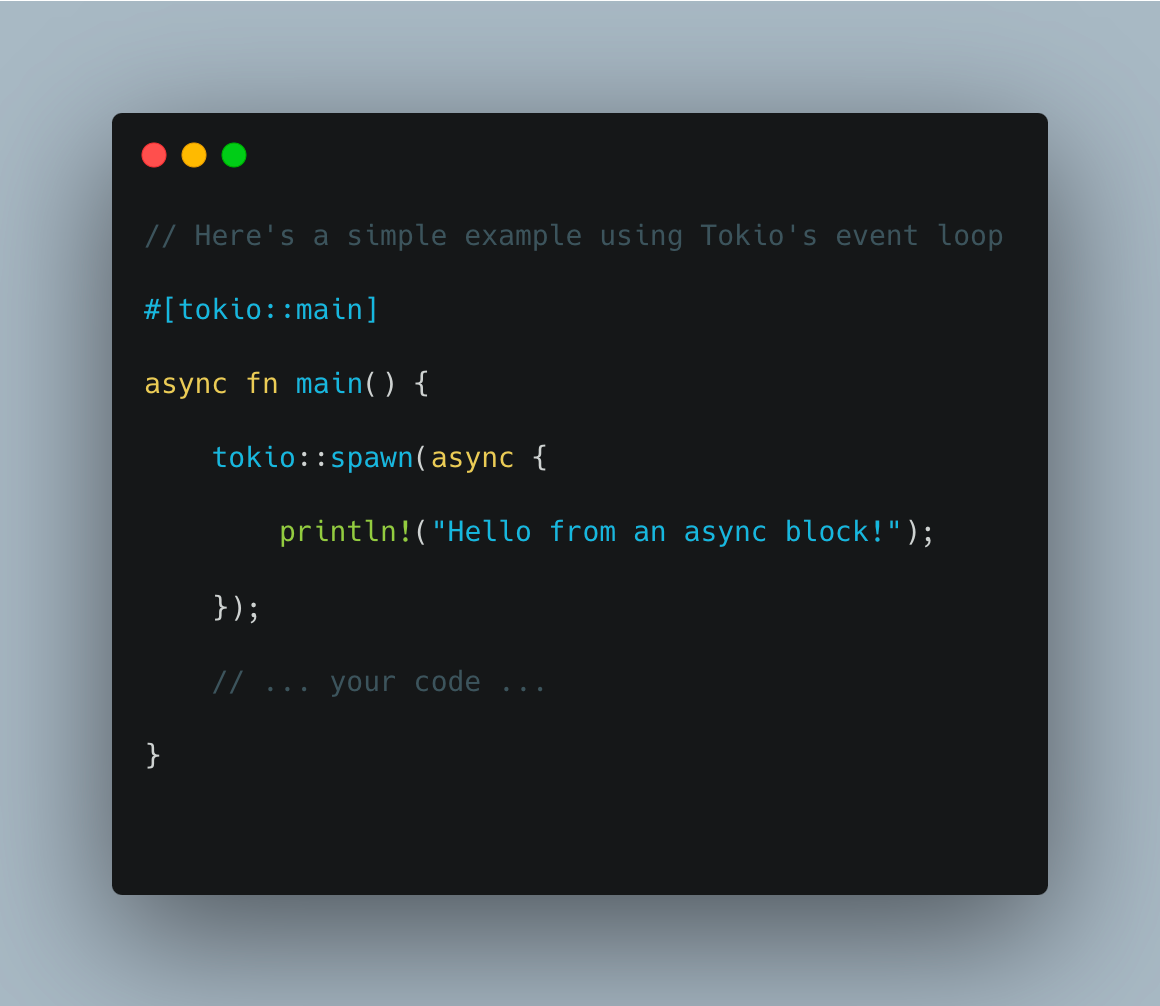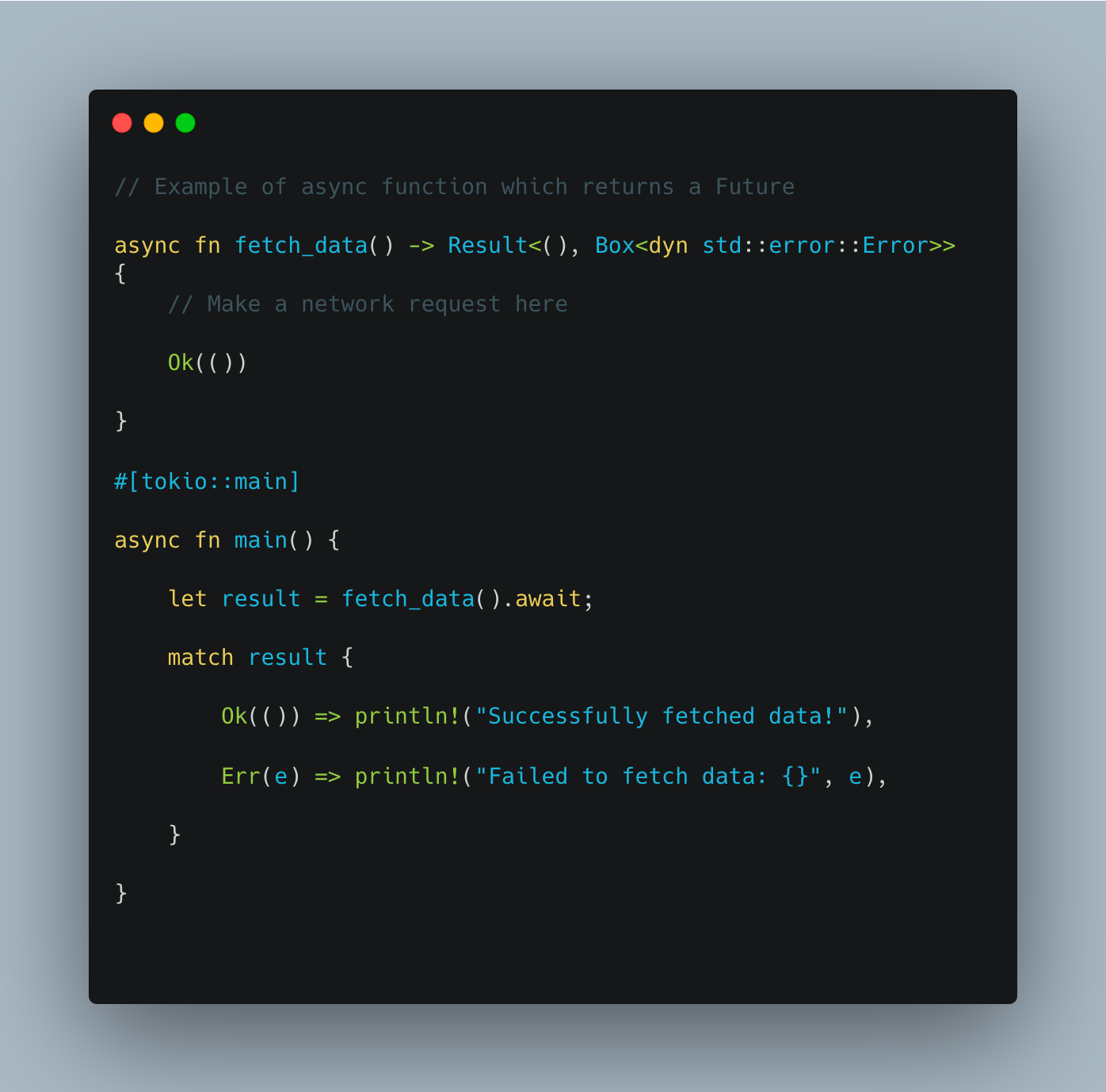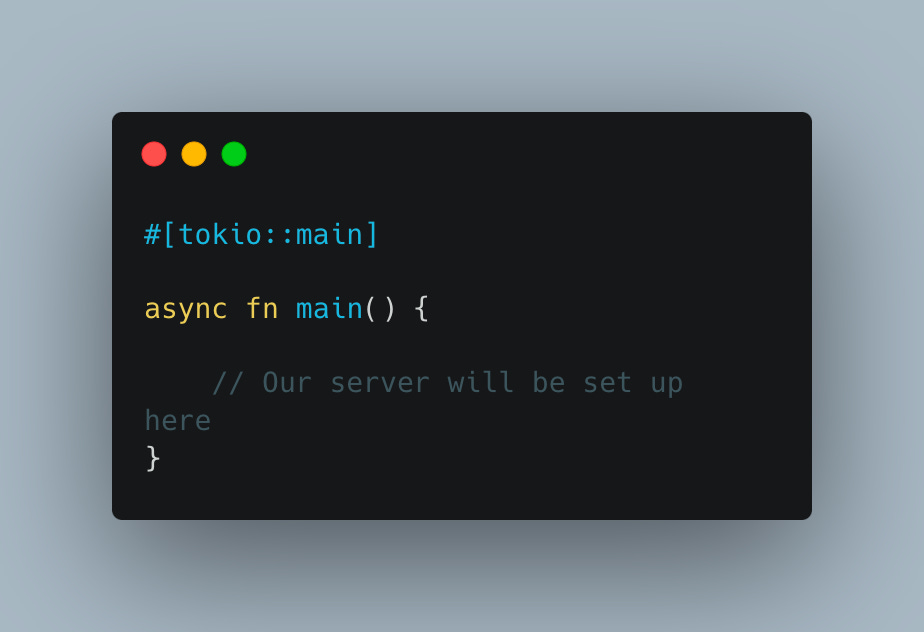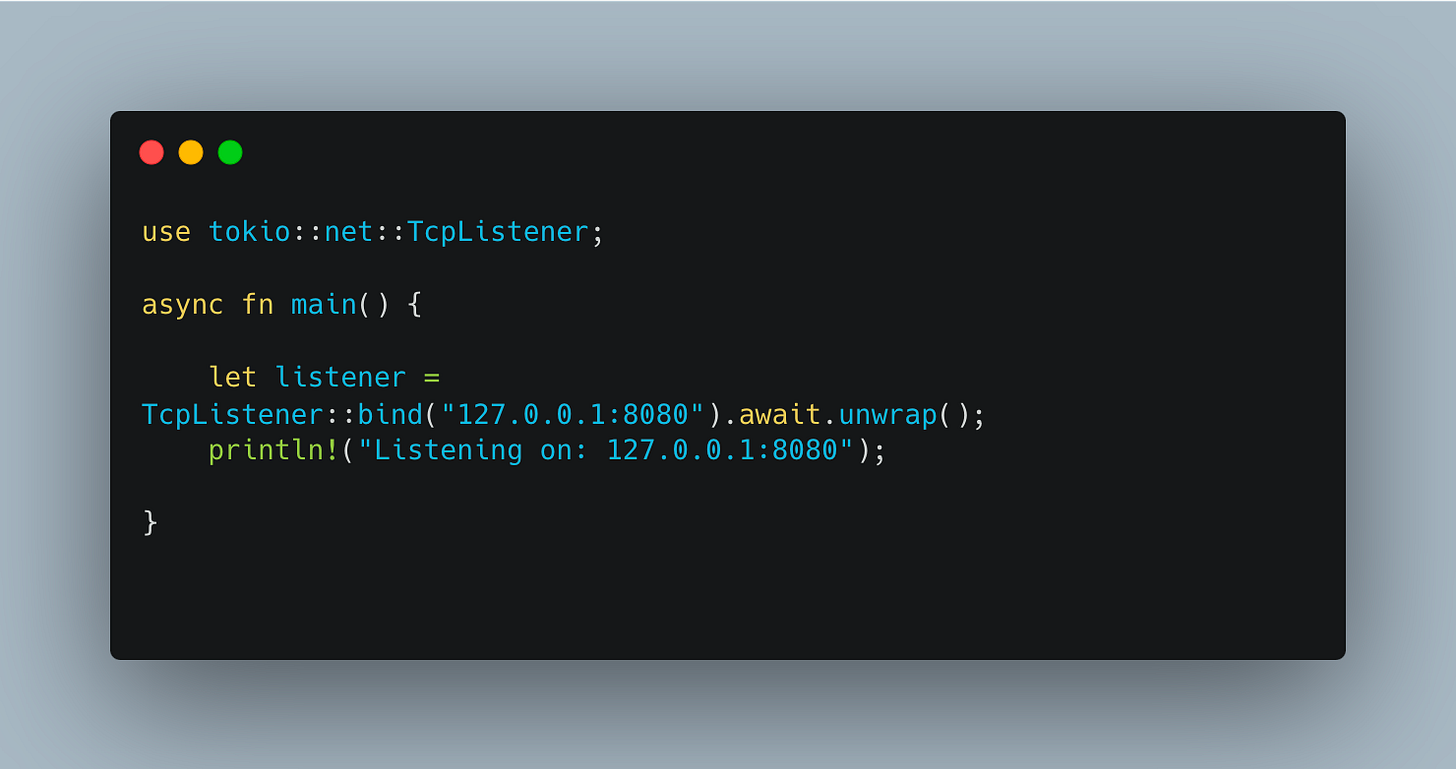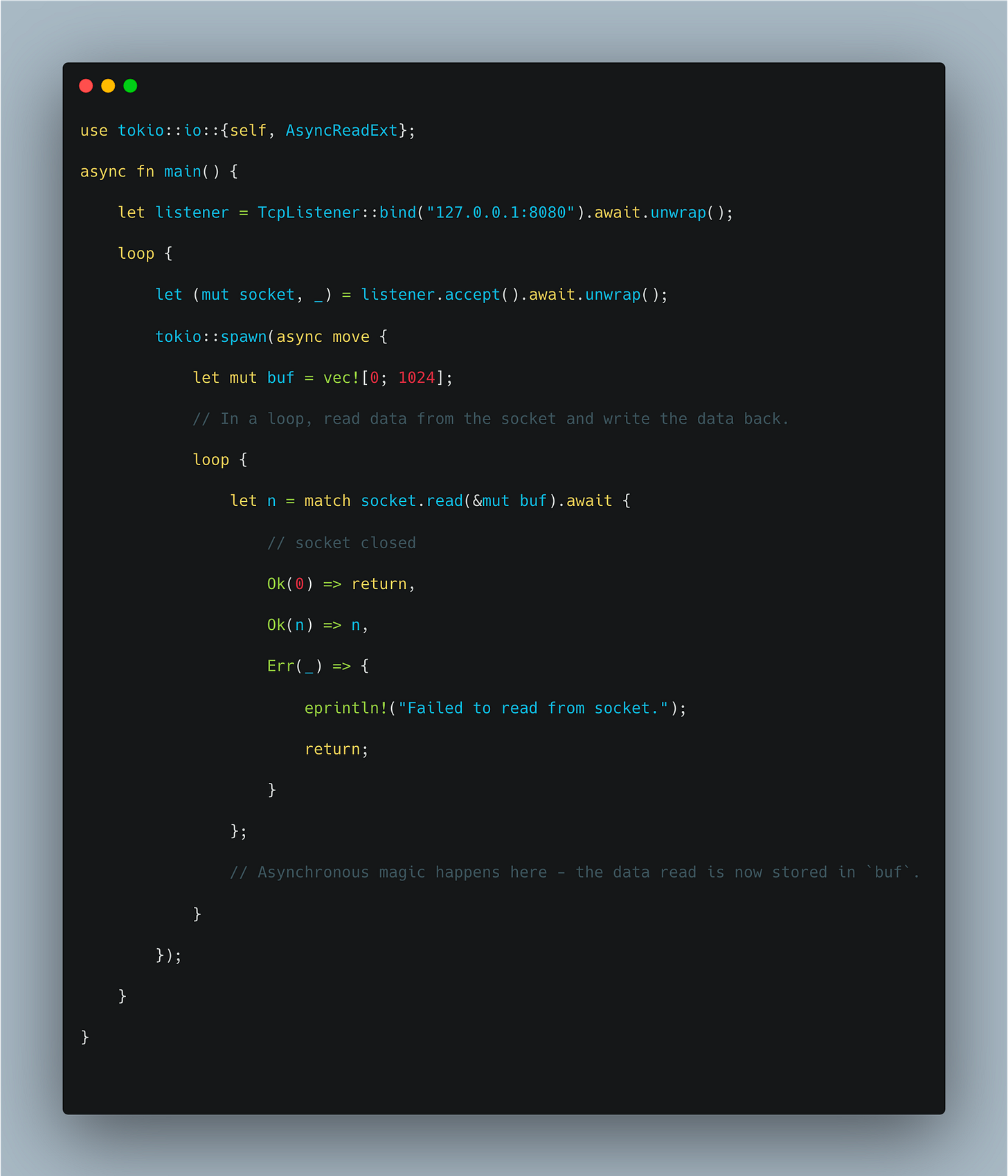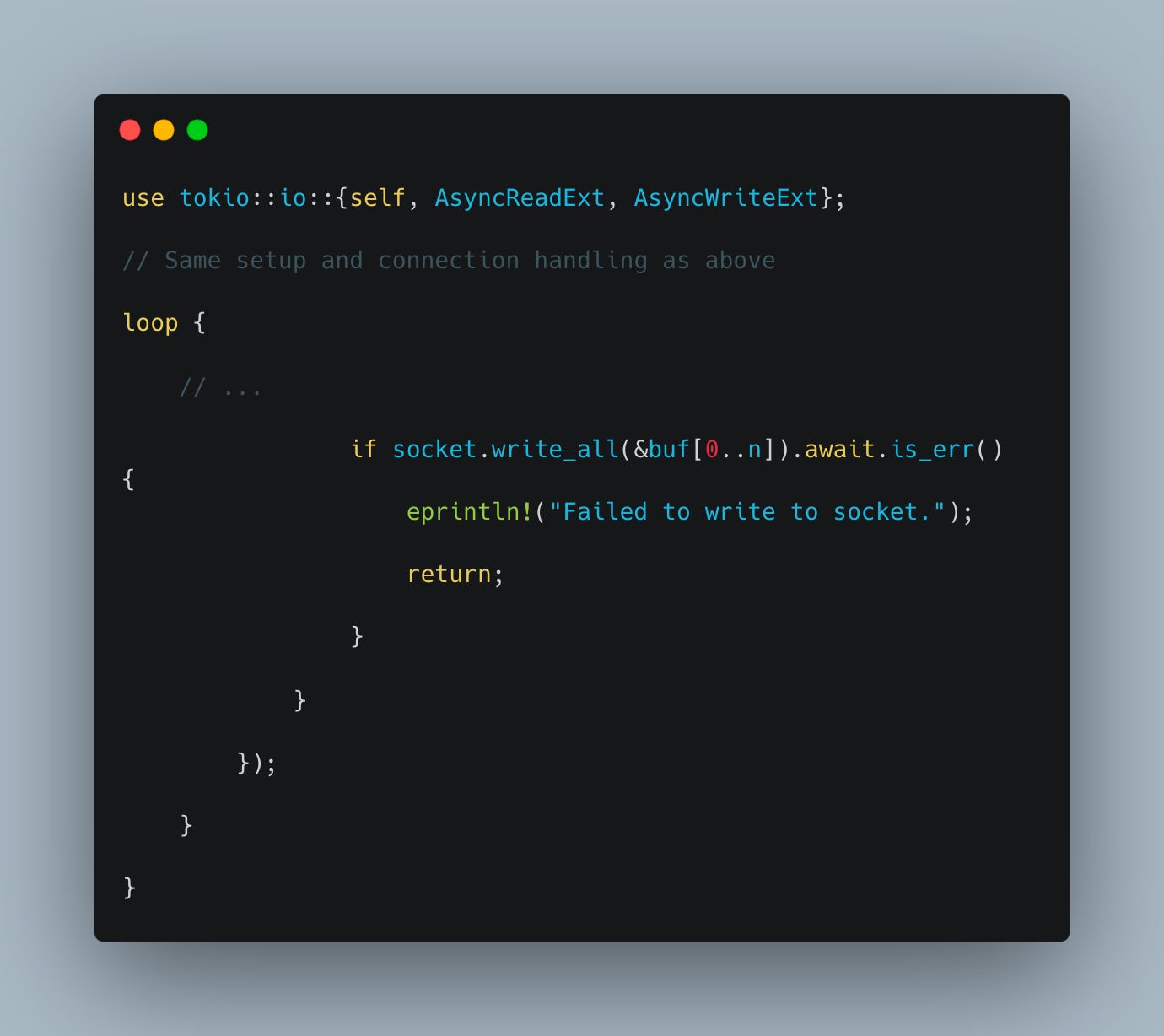Exploring a crate series! Tokio
Writing async applications
Tokio has found its place by providing Rustaceans with the tools to write reliable and efficient asynchronous applications. It's an essential gear in the Rust machine, helping developers manage the complexity of modern, high-performance network programming.
Our journey through the world of Tokio won't demand that you be a seasoned sysadmin or a network wizard. If you've ever been curious about the sorcery behind the scenes of a high-performance web application, this is the reading for you. The beauty of it all lies in its subtlety: with Tokio, the heavy lifting is concealed behind elegant, ergonomic APIs that make the hard stuff look easy.
What is the Tokio Crate?
Tokio is an asynchronous runtime designed to make it easier to write non-blocking, event-driven applications.
What makes Tokio notable? It comes packed with features and optimizations that allow for writing high-performance code:
Asynchronous I/O: This helps in reading and writing files, interacting with the network, and other operations that, in a synchronous world, would leave your application tapping its toes waiting for a response. With Tokio, you tell the system what to do when the data is ready, and meanwhile, your program can get on with other tasks.
Non-blocking networking: It's like opening a chat with clients across the world without having to wait for any of them to reply before speaking to the next. You can create servers and clients that can handle thousands of connections at once, all without getting tangled up.
Timers: With Tokio, implementing timeouts or scheduling tasks to run after a delay is as simple as setting an alarm clock.
Task scheduling: Similar to how a project manager delegates tasks and keeps a project moving smoothly, Tokio can spawn, run, and manage multiple concurrent tasks within an application.
Tokio's Design and Architecture
Tokio's framework capitalizes on an event-driven model, where I/O operations emit events that the program reacts to, instead of the traditional thread-based, blocking I/O. This design allows you to make the best of system resources, similar to how startups make do with lean budgets yet achieve scalability.
At the heart of Tokio's design is the reactor, which listens for events, such as incoming data or a timer expiring, and then signals the executor. Think of the reactor as an efficient office manager in a startup, always knowing who's free to take on new work. It's your main event loop, keeping an eye on all I/O resources, like files or network sockets.
The executor is tasked with managing "tasks," which can be likened to individual projects in a startup's pipeline. It assigns resources to ensure the tasks are carried out effectively, equipping your code to handle numerous tasks concurrently without a hitch.
Rust's async/await syntax is integrated with Tokio, offering a much cleaner, more readable approach to asynchronous code. Just as plain, straightforward pitches often work best for convincing investors, straightforward syntax makes your intentions in code clear and easier to maintain.
Here’s a quick look at how Futures and async/await work together in Tokio:
Futures are promises of work that may be completed at some point. By leveraging Futures and the async/await syntax, Tokio allows for writing asynchronous code that looks and behaves similarly to synchronous code, minimizing the mental shift for developers.
In summary, Tokio’s event-driven architecture—the trio of reactor, executor, and I/O resources—combined with Futures and Rust's async/await feature, make for a powerful framework.
Basic Use Case: Building an Asynchronous TCP Echo Server
If you're looking to dive into the world of asynchronous programming with Rust, building a TCP echo server is a practical first step. It's a simple yet effective way to get your feet wet, much like the early days in a startup where you aim for a minimal viable product that just works.
So, what's an echo server? Imagine you shout into a valley, and the valley shouts the exact same words back to you. That's what an echo server does, but with data over a network. You send it bytes, it sends those bytes right back. Why start with this? Like choosing to solve a distinct, high-value problem at a startup, it's a clear-cut task — a straightforward use case that allows you to comprehend the fundamentals of asynchronous network programming in Rust with Tokio.
Let's set up our TCP echo server using Tokio:
Step 1: Initializing the Tokio Runtime
Firstly, you need an async runtime to run your server's futures. Tokio provides that. You can kick off the Tokio runtime like this:
The `#[tokio::main]` macro prepares the asynchronous runtime for our application.
Step 2: Setting Up the TCP Listener
A listener is what you need for your server to hear incoming messages. Think of it as the storefront of a startup - ready to greet any customer that walks by.
Here, we've bound our listener to the localhost on port 8080.
Step 3: Accepting Connections and Reading Data
Similar to how a startup builds its client base, our server must accept connections and handle the data sent by clients.
This code awaits a connection, then spawns a new asynchronous task to handle each one, allowing our server to deal with multiple clients concurrently — true to the scalable nature of a startup.
Step 4: Writing Data Back to the Client
Finally, to complete the echo, we must send back the data received. It's like customer feedback at a startup: you listen and then respond accordingly.
By calling `write_all`, we ensure all data is sent back to the client. Our basic TCP echo server is now complete.
You've now built something that works - a small piece of the internet, if you will. This flow — initializing, binding, accepting, reading, and writing — is complete.
More to come
Tokio is not a panacea for all system programming woes, nor a guarantee of success on its own—it is, however, an instrument that, if wielded with expertise and foresight, will likely continue to prove indispensable for the Rust community.
Let me know if you want to see more Tokio content and we’ll circle back to move advanced use cases.


